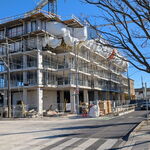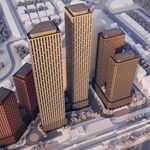The answer starts with an obvious question: what would be the problem which deploying dining cars might fix?
A fair question, particularly for shorter duration runs like Toronto-Ottawa or Ottawa-Montreal.
However, on a longer, continuous trip (which would be less common in the corridor, obviously), say a Toronto-Quebec City; or a London-Montreal, I think there is certainly a creature comfort appeal to a more pleasant dining experience, and being able to allow customers/encourage customers to stretch their legs and shift cars during the course of their journey.
Obviously, if this means net adding one additional car, for which tickets are not sold there is a cost in fuel and crew.
As for the Economics, suppose that I can sell each seat for an average fare of $50 and that I need one service attendant for every two cars. With any kind of dining facilities, I lose multiple seats (resulting in lower ticket revenues), while having at least one additional crew member to pay (resulting in higher operating costs). As much as I love them, there are unfortunately reason why dining car are steadily retreating from Western Europe and virtually extinct in Japan…
I wouldn't really disagree with any of the above, except to say, the argument in favour (which may not pass muster) would probably go something like this:
1) The dining car represents a net addition, not a loss of seats; obviously at the cost of additional fuel, car maintence and crew.
2) If the dining car drives up food/drink sales with decent margins, as least some portion of that cost may be recoverable.
3) If the option of the dining car appeals sufficiently to the broader public, it may be accretive on ticket pricing.
Note, I'm fully aware, that the above likely doesn't work out on most runs; and the question of preserving an amenity that might not be available on all or most runs has its own complexities in terms of cost and consistent customer experience.
I just thought there might be more statistical insight/study examining the above that you could shed light on.





